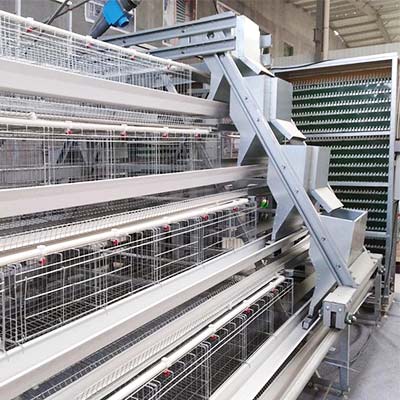How to Manage the Poultry House with Automatic Layer Cages in Mexico
- Published in Chicken house management
Managing a poultry house equipped with automatic layer cages in Mexico presents a unique set of challenges and opportunities. With advancements in technology, these systems have become increasingly popular among poultry farmers, offering increased efficiency, improved animal welfare, and optimized production yields. Here's a comprehensive guide on how to effectively manage such a poultry house in Mexico.
1. Understanding the System Basics
First and foremost, it's crucial to have a solid understanding of the automatic layer cage system. These systems typically consist of stacked cages designed to house hens in a controlled environment, with automated feeding and watering mechanisms. In Mexico's climate, it's important to ensure the system is equipped to withstand high temperatures and humidity, as well as to maintain proper ventilation and lighting for the hens' well-being.
2. Regular Maintenance and Cleaning
Maintaining a clean and hygienic environment is paramount in poultry farming. Regular cleaning of the cages, feeders, and waterers is essential to prevent the spread of diseases and ensure the health of your flock. Develop a schedule for daily, weekly, and monthly cleaning tasks, and ensure all staff are trained on proper cleaning protocols.
3. Monitoring and Adjusting Environmental Conditions
Automatic layer cages come with various sensors that monitor temperature, humidity, and air quality within the poultry house. Regularly check these readings and adjust the environmental conditions as needed to maintain optimal comfort for the hens. In Mexico's hot and humid climate, this may involve using fans, misting systems, or adjusting ventilation rates.

4. Managing Feed and Water Supply
Ensuring a consistent and balanced feed supply is crucial for optimal egg production. Use high-quality feeds tailored to the hens' specific needs and adjust the feeding schedule according to their production cycle. Similarly, ensure a constant supply of clean, fresh water by regularly checking and cleaning the waterers.
5. Monitoring Egg Collection and Handling
Automatic layer cages often come with egg collection systems that greatly simplify the egg-gathering process. However, it's still important to regularly check the collection belts and trays for broken eggs or debris, and to promptly remove any eggs from the system to prevent contamination. Implement proper egg handling procedures to ensure the quality and safety of your products.
6. Disease Prevention and Control
Regularly inspect the hens for signs of illness or stress, and immediately isolate and treat any sick birds. Implement biosecurity measures, such as limiting visitors, disinfecting equipment and clothing, and controlling pests and rodents, to prevent the spread of diseases. Keep accurate records of vaccination schedules and treatment histories to ensure the health of your flock.

7. Staff Training and Management
A well-trained and motivated staff is key to the success of any poultry operation. Ensure all staff members receive proper training on the operation and maintenance of the automatic layer cage system, as well as on animal handling, health, and safety protocols. Develop clear communication channels and a positive work environment to foster teamwork and collaboration.
8. Continuous Improvement and Innovation
Stay informed about the latest advancements in poultry farming technology and consider implementing new practices or technologies that can improve the efficiency and sustainability of your operation. Keep track of production data and analyze trends to identify areas for improvement and make informed decisions about your business.
In conclusion, managing a poultry house with automatic layer cages in Mexico requires a comprehensive approach that addresses the unique challenges and opportunities of the region. By focusing on maintenance, environmental control, feed and water management, egg collection and handling, disease prevention, staff training, and continuous improvement, you can optimize production yields, improve animal welfare, and ensure the long-term success of your poultry farm.
